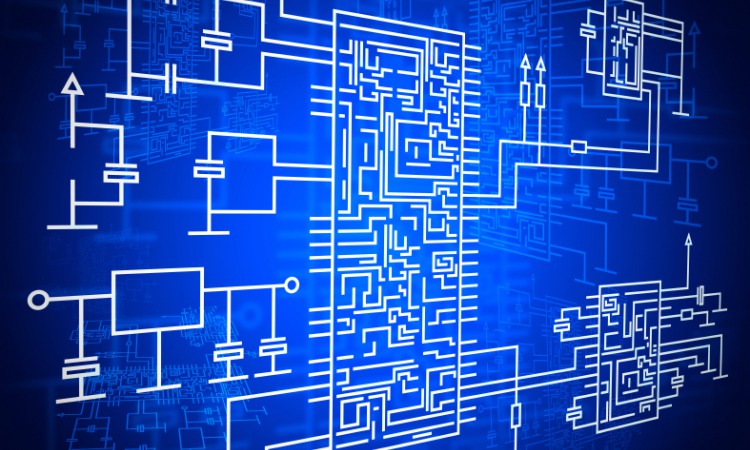Innovative Electric Design Solutions for Modern Facilities
As metropolitan environments expand progressively complex, integrating innovations such as smart grids and renewable energy sources ends up being paramount. These developments not just promise to maximize energy consumption but likewise foster durability against future needs.
Value of Ingenious Electrical Design
Cutting-edge electric design plays a vital duty in modern framework, affecting not just performance however also sustainability. As cities evolve and the demand for energy increases, the requirement for advanced electric systems ends up being critical. These systems need to not only meet present needs yet also prepare for future development and technological developments.
A well-executed electric design can considerably lower energy intake, thus decreasing functional expenses and minimizing environmental impact. By incorporating renewable resource sources, such as photovoltaic panels and wind generators, ingenious designs can boost power independence and durability. Smart grid technologies enable for real-time monitoring and monitoring of energy circulation, maximizing performance and reducing waste.
Safety is another critical aspect of electric design. Executing rigorous criteria and advanced innovations can minimize dangers connected with electrical failures, making certain a secure atmosphere for companies and residents alike. Furthermore, innovative styles help with adaptability, permitting infrastructures to incorporate emerging innovations flawlessly.
Secret Fads in Electric Design
As the landscape of electric design remains to progress, a number of crucial patterns are forming the future of the sector. One considerable pattern is the combination of wise innovation into electrical systems. The expansion of the Internet of Points (IoT) has made it possible for real-time tracking and control of electrical gadgets, improving performance and assisting in predictive upkeep.
One more trend is the growing emphasis on modular design. This approach enables scalable and adaptable options, allowing facilities to adapt to altering needs without comprehensive improvements. Additionally, the use of advanced simulation devices and Structure Details Modeling (BIM) is becoming significantly prevalent, enhancing the design procedure and improving partnership amongst stakeholders.
Moreover, developments in materials scientific research are resulting in the advancement of lighter, a lot more sturdy, and energy-efficient parts. This technology is especially essential for high-performance buildings and facilities jobs.
Lastly, there is a significant shift towards data-driven decision-making - residential electrical design. Leveraging data analytics aids developers enhance systems for efficiency and cost-effectiveness. With each other, these trends indicate a transformative period in electrical design, improving functionality, sustainability, and durability in modern-day infrastructure
Sustainable Energy Solutions
Lasting power services are increasingly coming to be a crucial focus in electric design, mirroring a wider commitment to environmental responsibility and resource performance. These options intend to minimize ecological impact while optimizing power usage in different infrastructures, from household structures to large industrial facilities.
Among the leading methods involves the integration of eco-friendly energy resources, such as solar panels and wind turbines, right into electrical systems. This not just minimizes dependence on nonrenewable fuel sources but also improves power strength. Additionally, ingenious energy storage systems, such as innovative batteries, enable effective administration and circulation of power, ensuring that surplus energy created throughout click for source peak production can be utilized throughout high demand periods.
Furthermore, energy-efficient design practices are being taken on to enhance general system performance. This consists of making use of energy-efficient illumination, heating and cooling systems, and clever building modern technologies that adapt and check energy use based on occupancy and environmental problems.
Smart Grid Technologies
The implementation of click to read lasting power services normally results in the expedition of wise grid technologies, which play a pivotal function in updating electric systems. Smart grids utilize advanced interaction technologies and data analytics to enhance the integrity, efficiency, and sustainability of power circulation. By incorporating digital innovation with standard grid infrastructure, these systems help with real-time monitoring, automated control, and improved decision-making abilities.
Among the key functions of wise grids is their capacity to suit renewable resource sources, such as solar and wind power. This flexibility not just lowers dependence on fossil gas but also permits a more decentralized energy production model. Smart grids make it possible for demand action programs, where customers can adjust their energy use based on real-time prices, therefore advertising power preservation and lowering peak lots needs.
Furthermore, wise grid modern technologies improve grid resilience by enabling quicker recognition and resolution of blackouts, eventually decreasing downtime. With anticipating upkeep and analytics, energies can boost and enhance operations solution distribution. As cities and areas proceed to develop, clever grid innovations are important for developing a effective and sustainable electric infrastructure that meets the needs of modern-day culture.

Future-Proofing Infrastructure
To ensure lasting viability and versatility, future-proofing facilities is important in the rapidly developing landscape of electrical design services. As modern technology developments and power demands shift, it is essential that electric systems are developed with adaptability in mind. This entails including scalable solutions see this that can fit future upgrades without demanding considerable overhauls.

In addition, sustainability has to be a cornerstone of future-proofed designs. Using eco-friendly energy sources, such as solar and wind, and maximizing power efficiency lower dependency on fossil gas, straightening with international initiatives to deal with environment change.
Final Thought
By focusing on versatility, effectiveness, and sustainability, these services resolve the advancing demands of power systems. The assimilation of wise grid technologies and sustainable power options enhances durability and lowers operational prices.
A well-executed electric design can significantly minimize power consumption, thereby reducing functional costs and minimizing ecological impact. By incorporating sustainable energy sources, such as solar panels and wind generators, ingenious designs can enhance energy freedom and strength. Furthermore, innovative power storage space systems, such as advanced batteries, enable effective administration and distribution of energy, guaranteeing that surplus energy generated during peak production can be used during high demand periods.
Smart grids make it possible for demand action programs, where customers can readjust their power use based on real-time pricing, therefore advertising energy conservation and lowering peak load demands. (electrical engineering design services)
As modern technology developments and energy demands shift, it is critical that electrical systems are designed with versatility in mind.